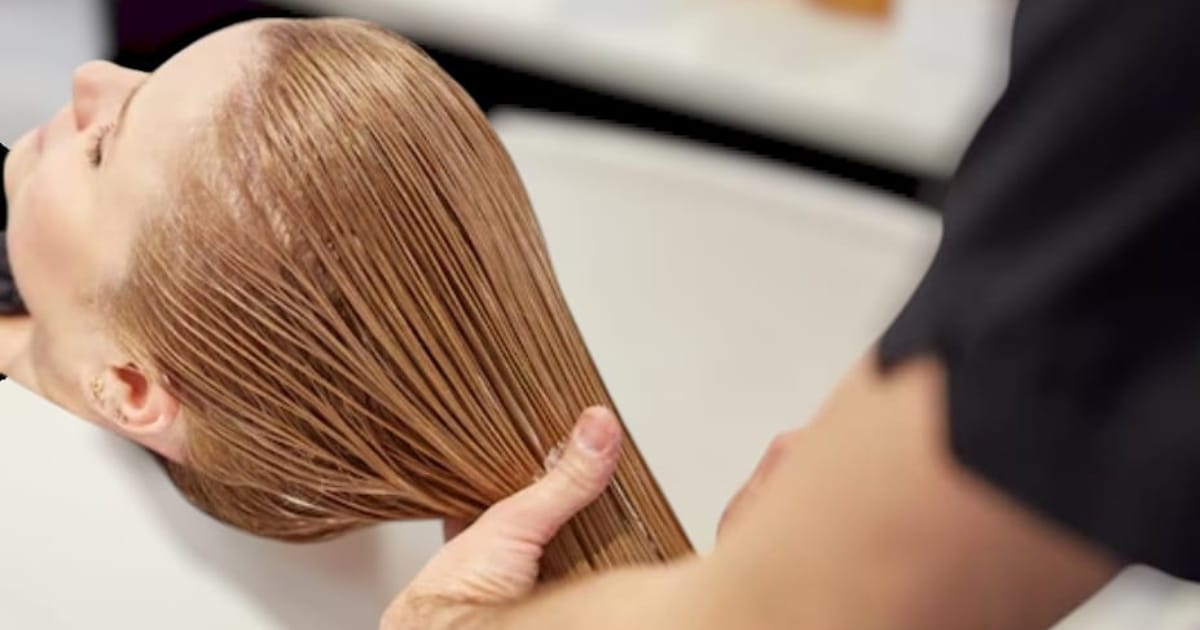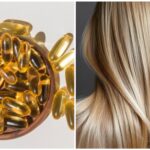No need to visit expensive salons yet; you can make a home-based hair mask that is inexpensive and effective for long shiny hair.
Indeed, a recipe is good and cost effective to create conditions for beautiful hair without cutting a leg.
Let’s get on discovering this simple yet powerful recipe which leaves your hair refreshed and recharged.
Which natural hair mask is best for dry hair?
Coconut Oil
How it works
Mash 2 tablespoons of coconut oil with an avocado. In fact, coconut oil allows deep conditioning and also helps regain moisture for dry and damaged hair.
Honey:
How it works
Add 1 tablespoon of honey into this mixture. Honey is a natural humectant that draws moisture into and retains it in the hair, giving it a soft and shiny texture.
Avocado
How it works
Take a ripe avocado, slice it into two, and scoop the flesh in a bowl before mashing it until smooth. Avocado is rich in healthy fats and vitamins, both of which to help nourish and hydrate hair.
Yogurt
How it works
Pour ¼ cups of plain, unsweetened yogurt directly into the bowl. Yogurt contains protein along with probiotics, which help strengthen the follicles of the hair, making healthier and tougher hair.
Egg:
How to work
For that added much needed protein shot, crack an egg open and drop it right into the mixture. Eggs are high nutrient content like biotin and protein making hairs strengthen and promote growth.
Start with Clean Damp Hair.
Part Your Hair to Apply It Evenly.
Apply from root to tip in the most dry and damaged parts.
Massage into your scalp to get the blood circulating
Once applied, cover hair with a shower cap or wrap in warm towel
Allow the mask to hold for 30 minutes to 1 hour to facilitate penetration.
Wash thoroughly with lukewarm water.
Complete it with a very soft shampoo and conditioner routine.
Frequency
Use this home remedy for your hair once per week for the best results. That is, the improvement in the texture, shine, and health of hair can be seen through continued application.
Begin by cleaning the hair with warm water and mild shampoo. Section your hair for even application. Apply the hair mask on your scalp to the ends of your hair, emphasizing the dry and damaged areas.
Gently rub the mask into the scalp so as to stimulate blood circulation. After the application, use a shower cap to cover the hair or wrap it up in a warm towel.
Making a natural homemade hair mask is the best way to pamper one’s hair and give it the nourishment that it truly deserves.
When you least need it, help your hair by using kitchen ingredients instead of chemical-laden products.
So go ahead and have some fun making the hair mask and enjoy the elegance of your renewed, flashy hair.
FAQs
1.What Is A Homemade Hair Mask?
Banana masks are a common DIY hair treatment for damaged, nourished, and moisturized hair, blending fully ripe avocado and banana with olive oil and honey gently layered from the top towards the ends. This mask works to moisturize and condition your hair.
A basic sort of yogurt and egg mask fortifies the hair with protein and hydration. Aloe vera and olive oil masks, made using gel and oil, respectively, enhance hair growth and soothe the scalp.
Honey and milk masks keep hair hydrated and soft.
Always run a patch test on the skin to avoid any form of allergic reactions before actually applying the real treatment. Lovely tresses await you with these brilliant hair masks.
2.How to Make a Dry Hair Mask?
A dry hair mask-a simple yet effective way to treat damaged hair through hydration.
This mask requires ripe avocado, honey, olive oil, and coconut oil to be applied only on dry hair, with special attention to the ends and dry areas. After keeping the mask on for 20 to 30 minutes, cover with a shower cap.
Rinse and wash with warm water to restore moisture and shine, varying according to hair length and thickness.
3.Tips for Drying Hair at Home in a Flash?
A dry hair mask is a simple yet efficient approach to repairing and moisturizing damaged hair.
In dry-haired application, the mask will consist of ripe avocado, honey, olive oil, and coconut oil, focusing only on the ends and dry areas.
Place on the mask for 20-30 minutes and cover it with a shower cap.
Rinsing and washing off with warm water helps restore moisture and luster, according to the individual’s hair length and thickness.
4.Can I Sleep with Wet Hair?
Wet hair can trigger scalp complications like breakage, frizz, and dandruff. Hair loses its strength when wet, thus prone to tangles, and when the scalp is wet, it becomes an ideal breeding ground for bacteria and fungus causing dandruff.
Moreover, sleeping with wet hair makes one cold and uncomfortable, impairing the quality of sleep. To avoid these problems, you should dry your hair before going to bed, use a silk pillowcase, and loosely braid it.
5.How to Prepare a Simple 3-Ingredient Hair Mask?
This is a super simple and highly effective home product hair mask with 3 ingredients that nearly takes care of all hair types:
Curd + Honey + Coconut Oil Mask (for silky, nourished hair)
Ingredients:
2 tbsp curd: deep conditioner + shine
1 tbsp honey: locks moisture in
1 tbsp coconut oil: strengthens + smooths
How to Use:
Combine all the components until all is smooth.
Apply the mixture onto the scalp and hair through roots until tips.
Cover with shower cap.
Wait for 30-40 minutes.
Rinse with lukewarm water and mild shampoo.
Result: Silky, frizz-free, healthy-looking hair.
6.Can We Apply Curd on Hair?
By God Yes!! Curds (yogurt) are nature’s magic for hair.
Benefits of Curd for Hair are:
Deep moisturizing for dry and coarse hair.
Reduces the itchiness and dandruff from your scalp.
Adds shine and softness to the strands.
Contains proteins that strengthen hair strands.
How to Use:
Use normal full cream curds and apply directly or use for mixing purposes with other ingredients (such as honey, aloe vera, or oils).
Leave for 20-30 minutes before washing off.
Tip: Use curd masks once a week for the best-effective results. Using flavored or sweetened curds should not be used











